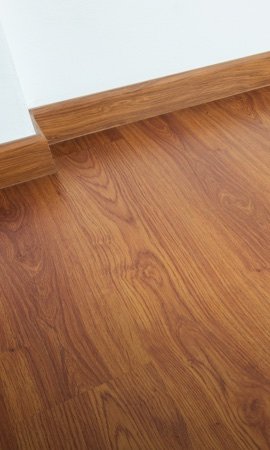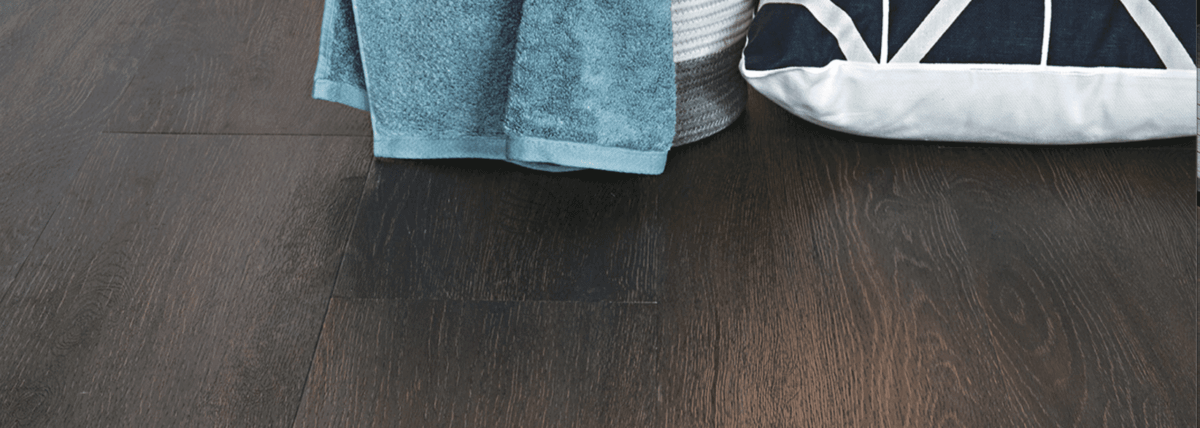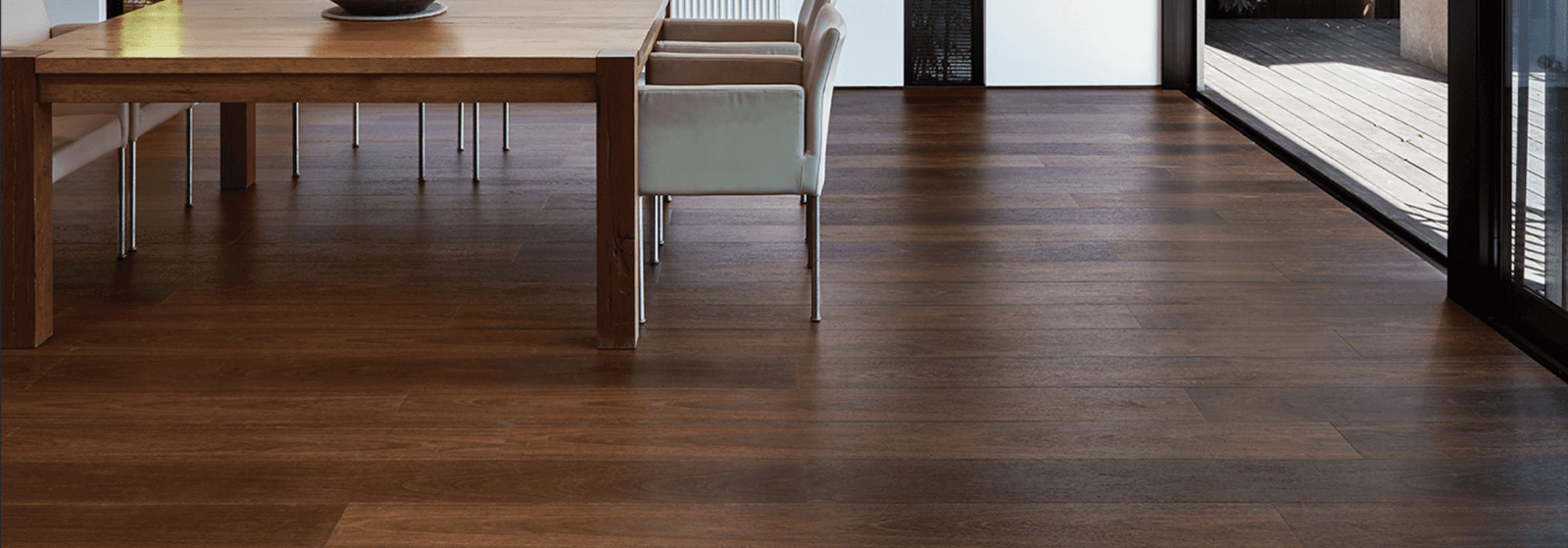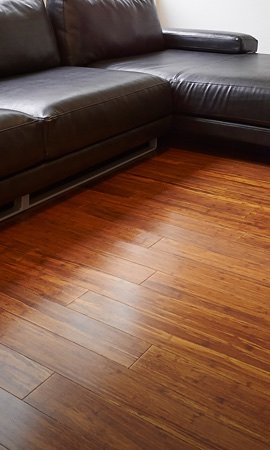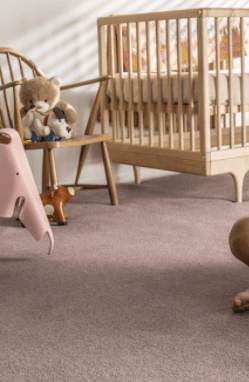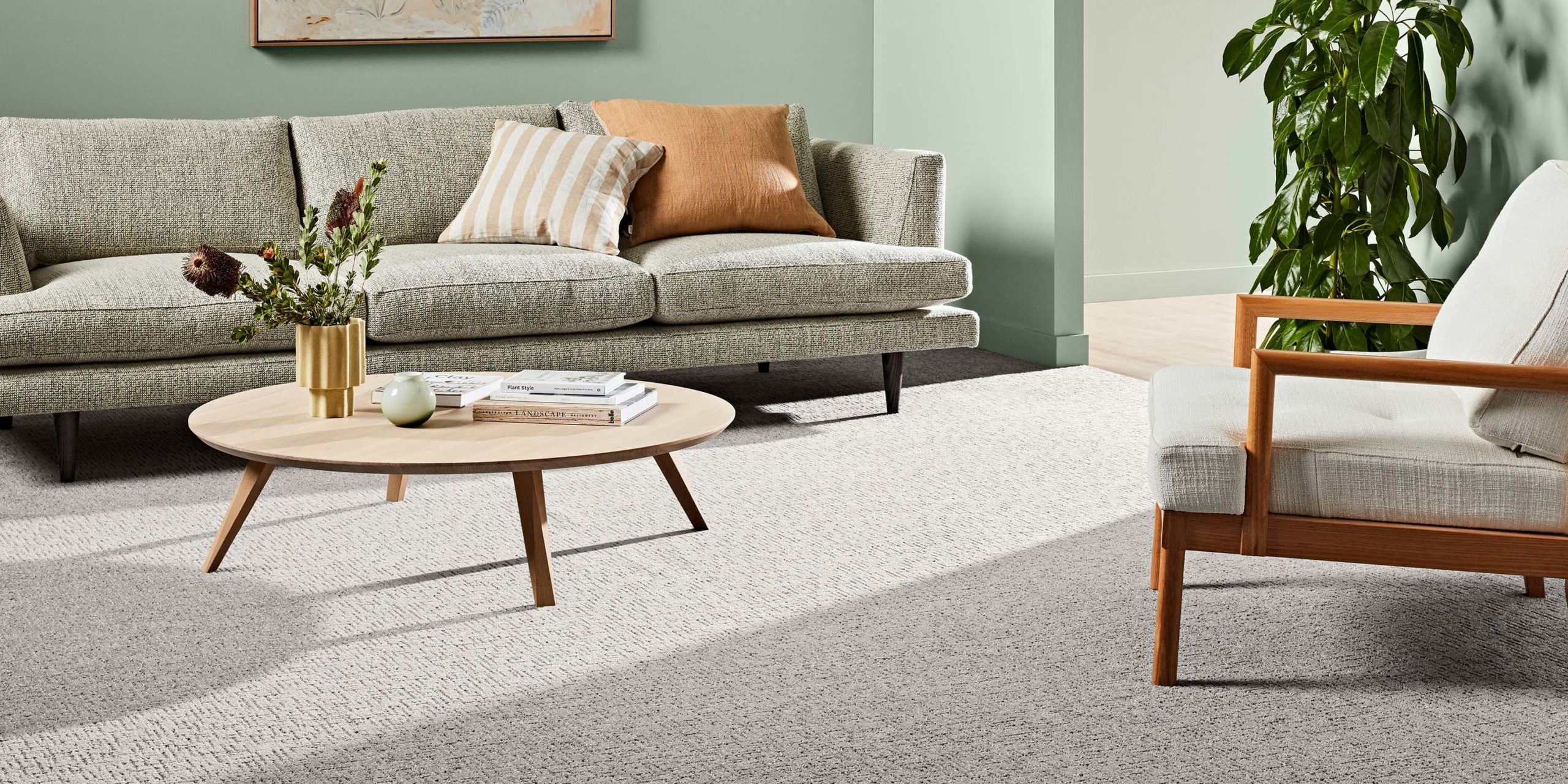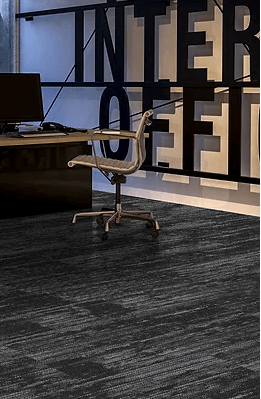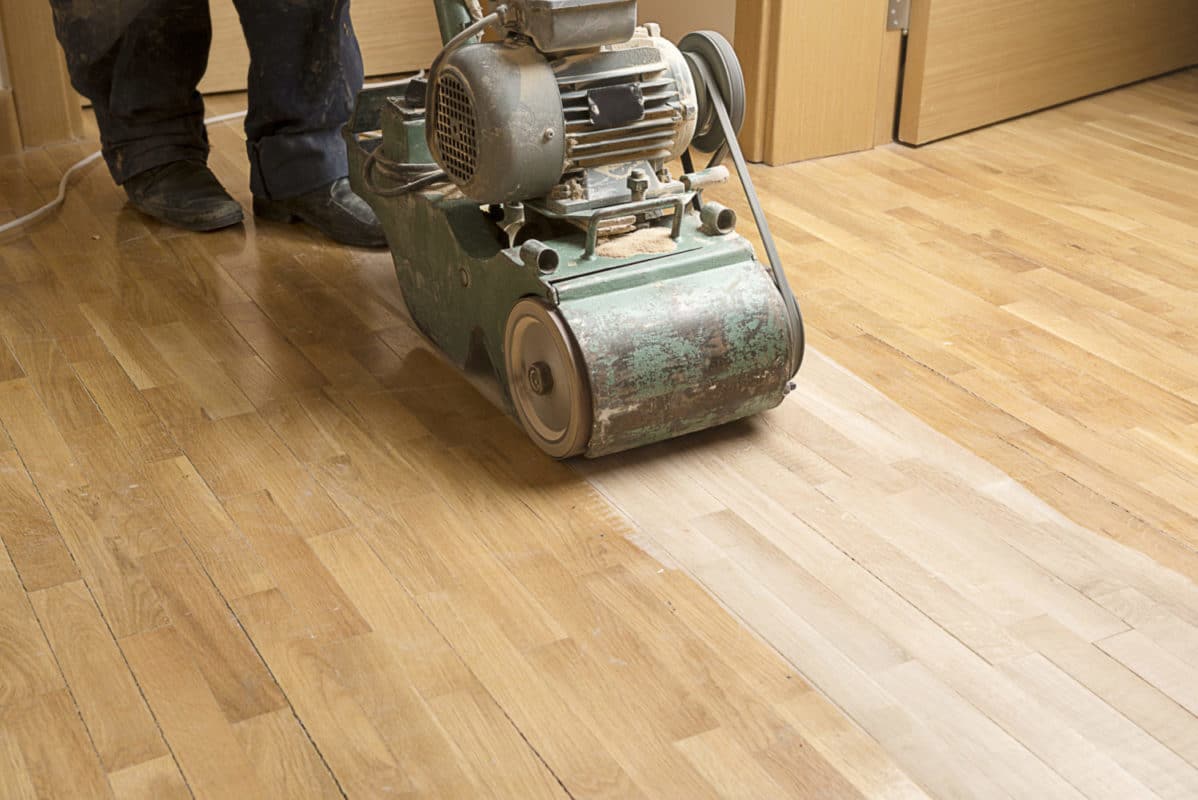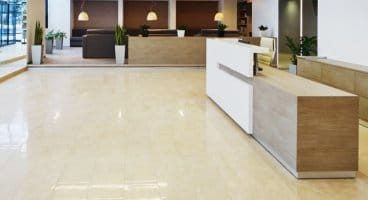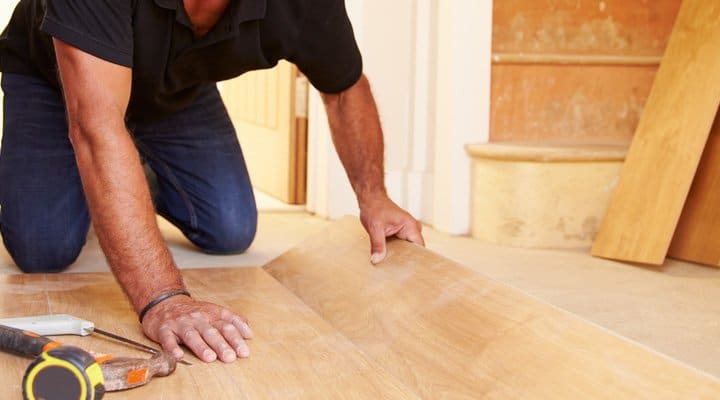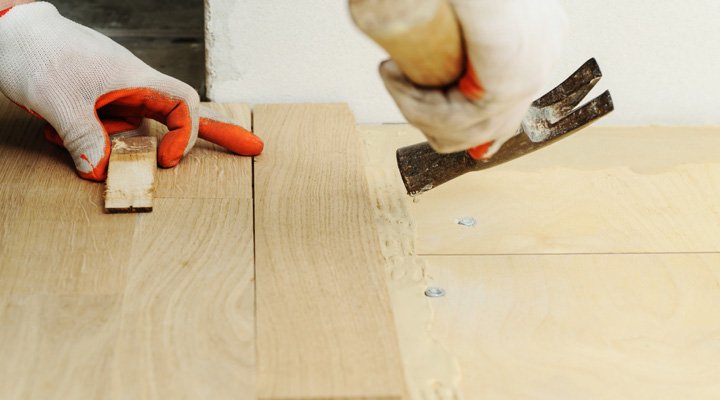

16 Aug Laminate Flooring vs Timber Flooring
Laminate flooring is a stylish and popular option that can allow you to have the look and feel of real wood at a much lower cost. Comprised of a textured and coloured print layer that is sandwiched between a protective topcoat and a composite core made of HDF (a mix of melamine resin and fibreboard), laminate flooring is an attractive choice when it comes to choosing the floors for your home.
But how does it compare to the real thing? In this article, we’ll look at how laminate flooring compares to traditional timber flooring, and what you can expect from each.
Cost
Laminate Flooring
Laminate flooring is much more affordable in terms of both material and installation, so it’s an ideal option for you to spruce up your home. Because it’s not made directly from trees but instead from a cheaper HDF substrate, laminate flooring is cheaper to buy without sacrificing quality. In addition, since laminate flooring is installed as a floating floor, there are fewer preparation and installation costs. Newer laminate floorboards even have an interlocking installation system which allows them to click together without using any expensive or smelly glue.
Hardwood Flooring
On average, hardwood flooring usually costs atleast twice as much to get fully installed, although this depends on what species of tree has been used for its timber. One area where timber shines, though, is in holding its value in the long run. Timber flooring can also significantly increase the resale value of your home, which is particularly useful if you’re looking to sell.
Design and Versatility
Laminate Flooring
Because laminate flooring makes use of a customisable print layer, it can use high definition printing and embossing to entirely replicate the texture and look of surfaces such as timber, but also brick, stone and even metal. This allows it to have many more styles and designs than timber flooring, making it easier for you to choose ones that closely fit the design of your home.
Additionally, the hard protective topcoat used on laminate flooring not only helps protect it from scratches and stains, but is also UV resistant. This means that laminate flooring maintains its colour and does not fade over time, unlike timber.
It should be noted, however, that the look and feel of laminate flooring greatly depends on the quality of flooring that you get. Cheaper laminate flooring usually uses cheaper printing that can visibly look ‘fake’ when viewed at a close distance, and should generally be avoided.
Hardwood Flooring
Although timber is less versatile and doesn’t have as many styles and colours as laminate flooring, it’s the ‘real deal’ – the look of timber flooring doesn’t depend upon printing quality. Many people also enjoy the fact that timber can age gracefully, as it changes tones due to natural changes in its composition. Timber flooring is also more distinctive than laminate flooring because it has knots and other unique features that add to its character.
Durability
Laminate Flooring
By virtue of its durable top layer, laminate flooring is highly resistant to scratches and moisture, making it ideal for high-traffic commercial and residential properties. However, although some types of laminate flooring can resist liquid spills, it is still recommended to protect your laminate floors from water and moisture as much as possible.
Since laminate floorboards are usually installed using an interlocking mechanism, there are little gaps for grime to collect it, unlike timber floorboards. This means that you can keep your floors cleaner and more hygienic, as laminate flooring only requires occasional sweeping and vacuuming.
In addition, the particleboards used in laminate floorboards are stable and sometimes moisture-resistant. This helps prevent warping and shrinkage in the event that moisture gets under the laminate flooring.
Hardwood Flooring
A product of natural timber, timber floors have a softer surface than laminate flooring. The durability of hardwood timber flooring depends on the type of wood, the number and quality of coatings. Over time, timber floors usually show more wear over time than laminate floors.
Timber flooring can also naturally expand and contract, which can cause buckling and warping, especially if exposed to moisture. They can also fade under sunlight, particularly if the surface has not been coated with a protective seal such as polyurethane.
However, a major benefit that timber flooring has over laminate is that it can be refinished, i.e. any scratches, dents, or other damage can simply be sanded down to reveal a fresh surface. This means that timber flooring can look much nicer over a longer period of time.
Comfort
Laminate Flooring
Laminate flooring feels solid underfoot and can come in smooth or textured finishes, so it’s very comfortable and can be adjusted to fit your needs.
However, because laminate flooring is installed directly above the subfloor as a floating floor and also thinner than their timber counterparts, they may sound and feel more hollow than timber flooring when walked upon.
However, this isn’t a big problem because laminate flooring is usually installed with a resilient foam underlayment that provides greater stability and sound reduction.
Hardwood Flooring
Timber flooring is extremely comfortable and radiates natural warmth of real timber, helping make your home feel comfortable throughout the year. Hardwood flooring feels very solid underfoot, is very stable (firmly glued or nailed to the sub-floor) and comfortable to walk upon.
Health and Safety
Laminate Flooring
Laminate flooring is primarily a synthetic product, and there are some manufacturers of laminate flooring skip on quality and use toxic chemicals during production. As a result, these types of laminate flooring can emit volatile organic compounds (VOCs) that can cause irritation and allergies.
Although this is a rare issue with most laminate flooring on the market, make sure to check for emissions test reports on laminate floors prior to making a purchase. At FloorVenue, we only stock laminate flooring models that meet the most stringent emissions ratings (E1).
Hardwood Flooring
As a natural wood, timber flooring is very healthy and safe for homes. Research by Planet Ark highlights that wood floors provide benefits for a person’s emotional state and physical state, reporting a reduction in blood pressure, heart rate and stress levels.
Eco-Friendliness
Laminate Flooring
Laminate flooring is very environmentally friendly, as it utilised recycled wood (wood chips, sawdust etc) and other materials to build it’s high-density fibre core. This greatly reduces the need for the deforestation required to create timber floors.
However, laminate flooring itself cannot easily be recycled further because it contains chemicals that cannot be safely incinerated.
Hardwood Flooring
Timber flooring is a more natural, but less environmentally-friendly floor, because trees need to cut down to harvest the wood. However, you can choose sustainable timber or recycled timber to be kinder to the environment.
Laminate Flooring vs Hardwood Flooring: Which is better?
Both timber and laminate have their own pros and cons, and there is no better choice. Laminate floors are better for those looking for a high durable and affordable floor. Timber floors (solid timber or engineered timber) are better for those who prefer the authenticity and beautify of natural timber, and aren’t afraid to spend more for it.
The best floor depends on your personal requirements. Need help choosing? FloorVenue has been supplying and installing timber and laminate flooring to Sydney homes for almost 2 decades, and we’d love to help you make a decision.
Just give us a call on 9750 5095 if you’re based in Sydney East and Inner West(Belfield Office) and 9831 7621 if you’re based in Sydney North West (Blacktown Office).

